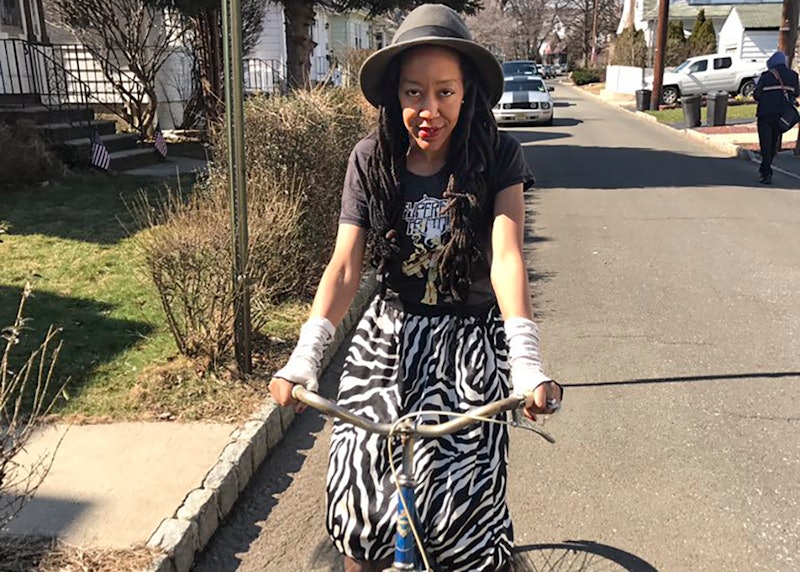News
I Never Feel Safe Riding My Bike — And Not Because Of Terrorism

When I heard the news that a man drove a truck through a New York City bike lane this week, killing eight people and injuring 11 more, I was horrified — but I wasn’t surprised. For my work at Transportation Alternatives, a nonprofit that does advocacy for safer streets, I hear about tragedies like this all the time. According to the NYC Vision Zero website, 80 pedestrians and 17 bicyclists have been killed by cars on in New York City this year alone. Cars are killing and injuring cyclists and pedestrian almost every day — and that’s because U.S. cities are designed to put them in danger.
"Tuesday’s attack was a classic case of traffic violence, despite whatever the driver said or who he pledged allegiance to."
I know because I ride my bike to work. I ride my bike to the grocery store, to meet friends, and to go to the bookstore. I am on my bike four hours every day, and not only do l not feel safe, I do not feel comfortable. The reason I feel this way is because I know the city is not listening to us.
Tuesday’s attack was a classic case of traffic violence, despite whatever the driver said or whoever he pledged allegiance to. The United States has the power to stop traffic violence — without condemning immigrants, restricting visas, or spying on Muslim communities.
According to DNAinfo, there have been at least 17 crashes in that exact spot in the last five years. New York City authorities can’t say they didn’t know that the Hudson River Greenway was dangerous. Just last year, bicyclist Olga Cook, 30, was killed when a driver was making a right turn onto the West Side Highway. Cook’s husband, Travis Maclean, sued the Hudson River Trust Authority, the Battery Park City Authority, the City DOT, and the State DOT for neglecting to make the Greenway safer, even though they knew about the 16 previous crashes. They basically did nothing — just minimal improvements.
Recommendations were given to New York City authorities by Transportation Alternatives more than 10 years ago. Bollards, which are short posts that separate car traffic from cyclists, could have been installed. The roadway along the Greenway could have been narrowed to slow down vehicles, which is keeps cyclists safe when drivers make left and right turns. The bike lanes could have been made more visible with bright green paint — and reflectors could have been added to the edges of bike lanes and driveways across the Greenway. (Heightened visibility like this makes drivers more aware of people cycling.) Even the traffic signal for cars could have been lowered to the same height as the traffic signals for pedestrians, which helps drivers notice people on the street by bringing down their field of vision.
The City and State Departments of Transportation could have implemented any number of tweaks safe-streets advocates recommended, but they chose to do the bare minimum and now more people are dead and injured. At this point, it’s obvious that the authorities would rather pedestrians and cyclists die than force motorists to slow down and go the long way around.
"The authorities would rather pedestrians and cyclists die than force motorists to slow down and go the long way around."
We as a society cannot control each individual person who wants to do harm, but bad policy and bad infrastructure design will only embolden bad people. We have the technology, we have the research, and we have the data to make our roads safer for people who walk and ride.
Tuesday’s tragedy could have been mitigated with good street design. People should not have to die before we implement common sense changes. Everything could have been different if people were prioritized over cars.
Editor's Note: This op-ed does not reflect the views of BDG Media and is part of a larger, feminist discourse on today's political climate.